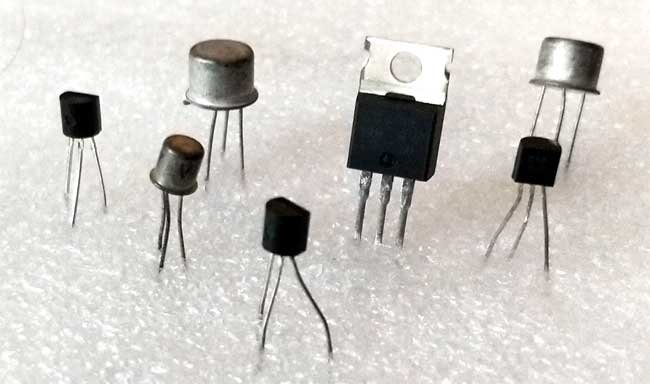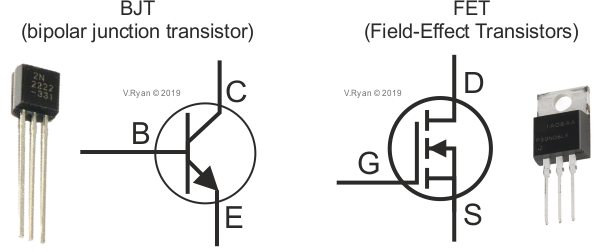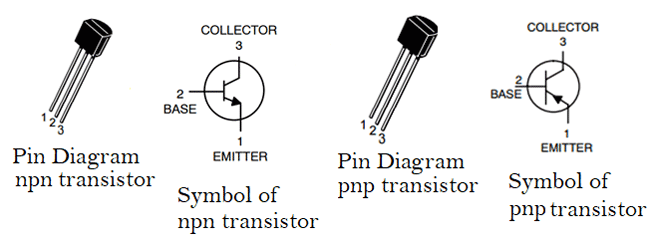Transistor

A transistor is a semiconductor device used to amplify or switch electronic signals and electrical power. It is composed of semiconductor material usually with at least three terminals for connection to an external circuit. There are typically three electrical leads in a transistor, called the emitter, the collector, and the base—or, in modern switching applications, the source, the drain, and the gate. An electrical signal applied to the base (or gate) influences the semiconductor material’s ability to conduct electrical current, which flows between the emitter (or source) and collector (or drain) in most applications.
There are two main types of transistor: bipolar junction transistors (BJTs) and field effect transistors (FETs).

What is a BJT?
A Bipolar Junction Transistor (also known as a BJT or BJT Transistor) is a three-terminal semiconductor device consisting of two p-n junctions which are able to amplify or magnify a signal. It is a current controlled device. The three terminals of the BJT are the base, the collector and the emitter. A BJT is a type of transistor that uses both electrons and holes as charge carriers.
What is a FET?
A Field Effect Transistor is a three-terminal amplifying device. Its terminals are known as the source, gate, and drain, and correspond respectively to the emitter, base, and collector of a normal transistor. FETs use either electrons or holes as charge carriers in their operation, but not both.

NPN and PNP Transistors
The NPN and PNP both are the bipolar junction transistor. It is the current controlling devices and mainly used for switching and amplifying the signal. Mostly, the NPN transistor is used in the circuit because in NPN transistor the conduction current is mainly by electrons while in the PNP transistor the conduction current is because of the holes. As the electrons are more mobile the NPN has high conduction.
Advantages of Transistor:
Smaller mechanical sensitivity.
Lower cost and smaller in size, especially in small-signal circuits.
Low operating voltages for greater safety, lower costs, and tighter clearances.
Extremely long life.
No power consumption by a cathode heater.
Fast switching.
